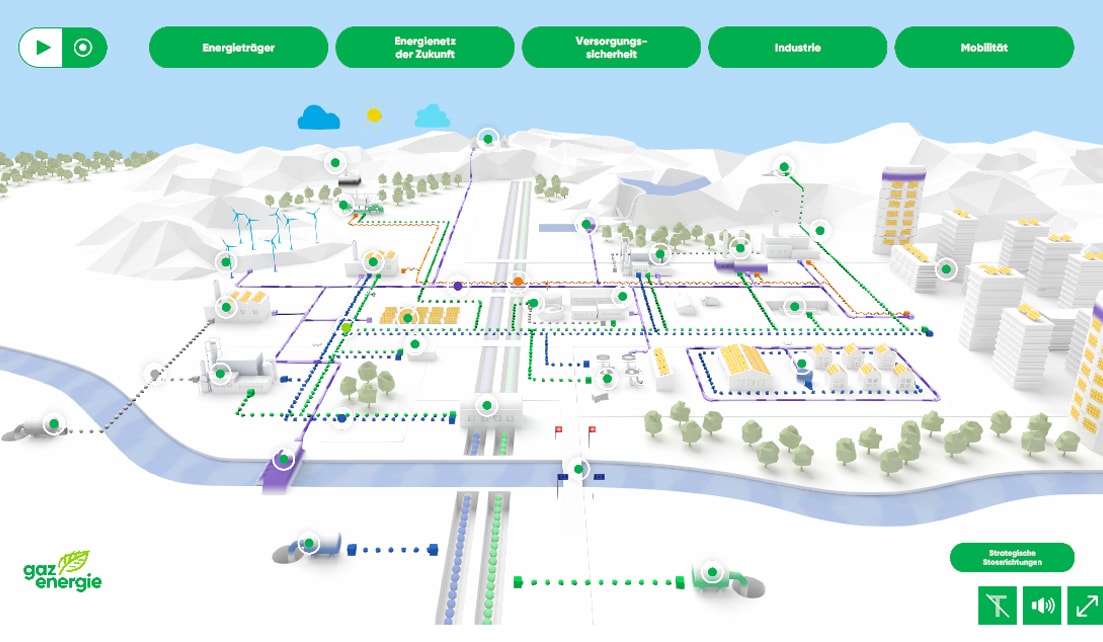Portal for more climate-friendly mobility
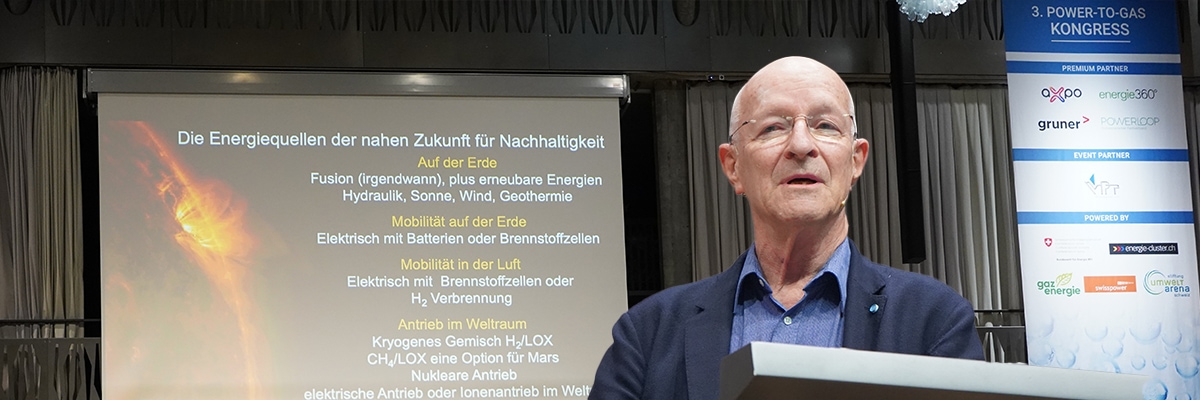
Tesla boss also uses methane for thrust
Renewable gases are crucial for the energy transition: This was also impressively demonstrated at the third Power-to-Gas Congress Switzerland. However, the direction and strategy for biogas, green hydrogen and ammonia is still unclear, at least in Switzerland.
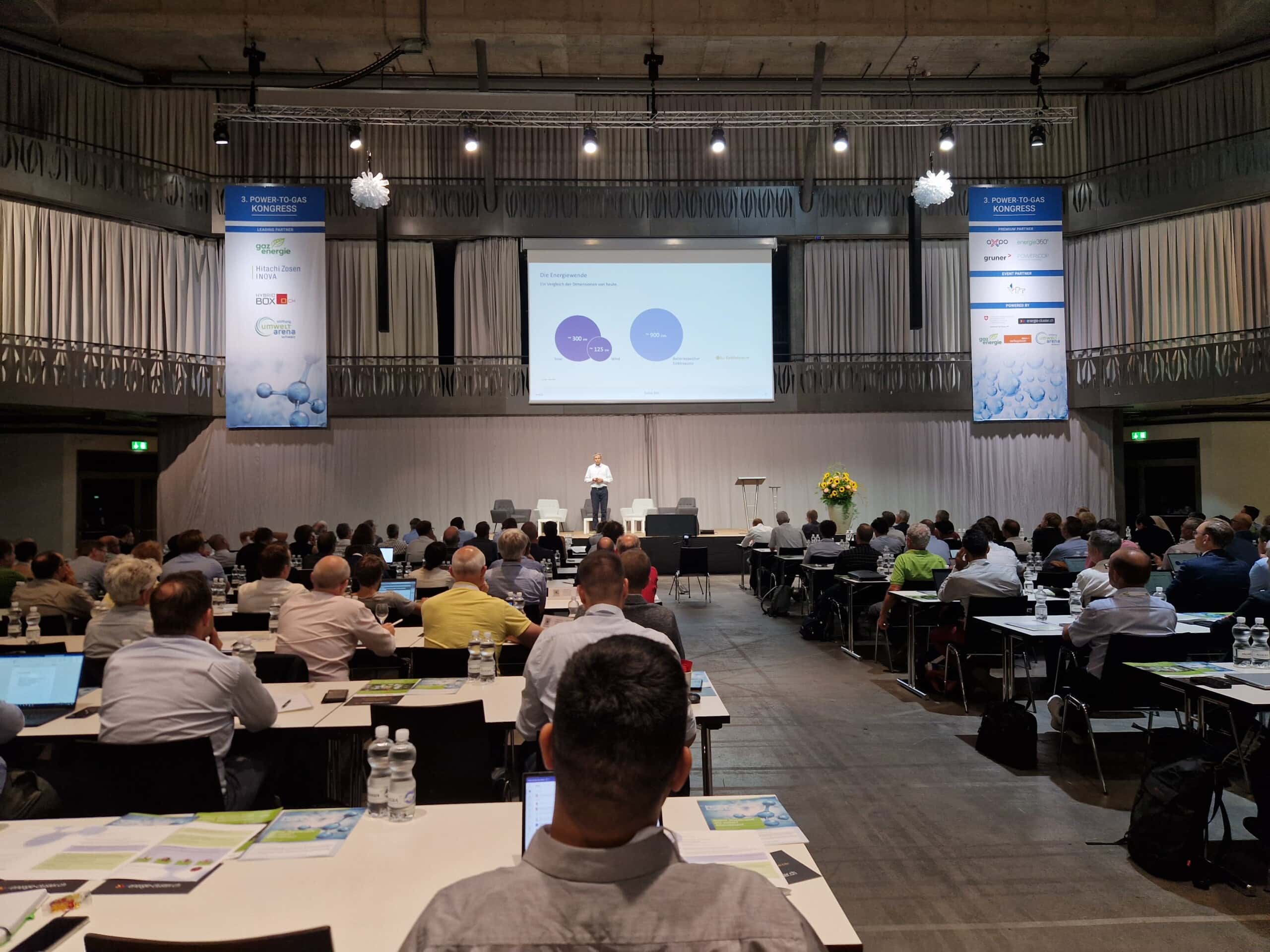 SFOE specialist Markus Bareit presented the current status of efforts in Switzerland in the field of hydrogen. Source: CNG-Mobility.ch
SFOE specialist Markus Bareit presented the current status of efforts in Switzerland in the field of hydrogen. Source: CNG-Mobility.ch
At the well-attended third Power-to-Gas Congress in the Umwelt-Arena Spreitenbach AG, it quickly became clear that renewable energy is needed if the ambitious goals of politicians in Switzerland, but also in the EU, are to be achieved. And awareness has risen that in order to achieve the energy turnaround, one has to rely not only on electrons, but also on gaseous and liquid molecules, as long as they have a renewable origin. “Net zero is a very ambitious target. It’s not about the federal government or the industry, but everyone has to work together to achieve it,” explained SFOE technical specialist Markus Bareit. “We need to massively increase the v and we need sector coupling. It doesn’t just need e-cars or heat pumps, but also power-to-gas technology.”
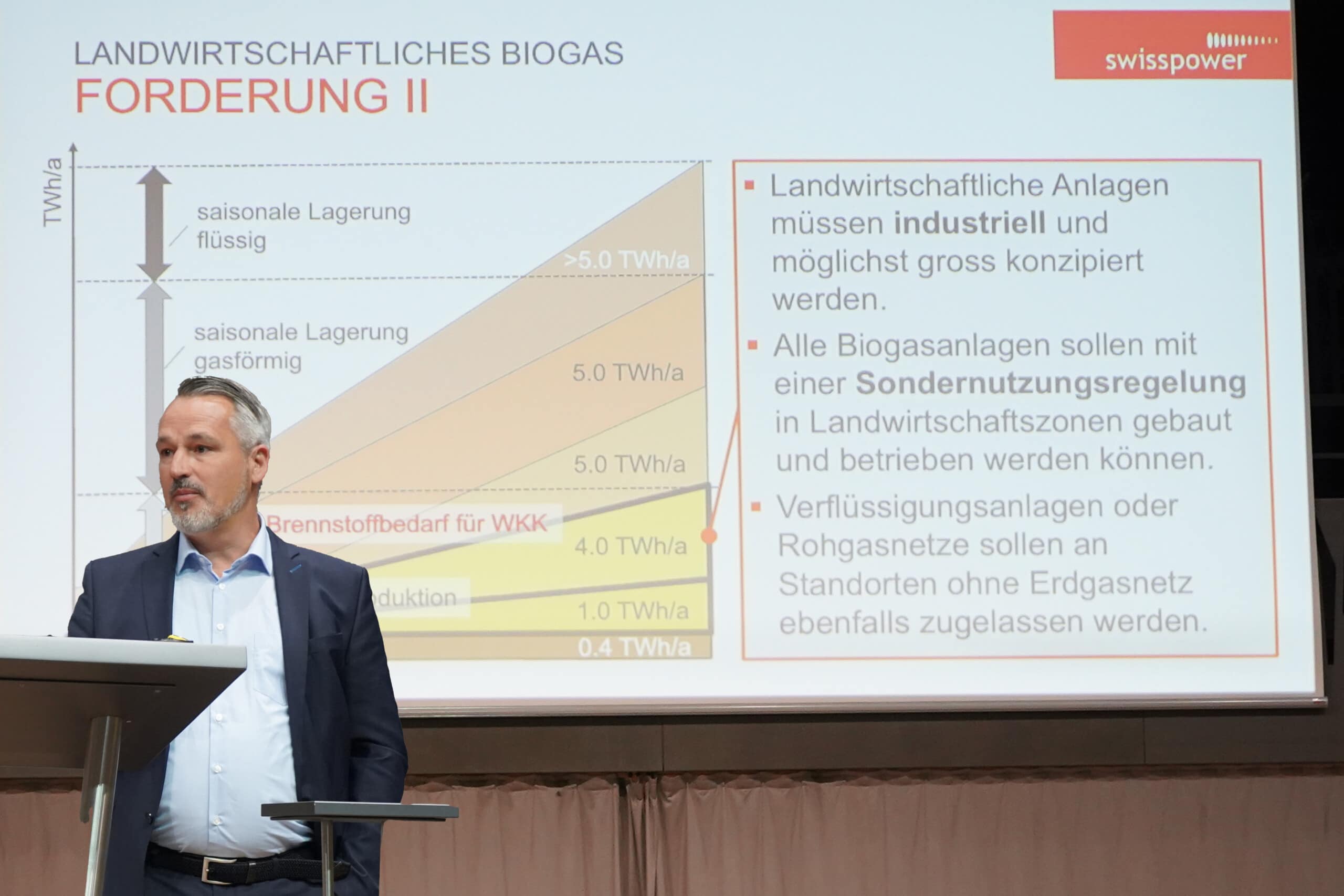 Thomas Peyer, Managing Director of Swisspower Green Gas AG, urged the participants not to think only of hydrogen. Source: CNG-Mobility.ch
Thomas Peyer, Managing Director of Swisspower Green Gas AG, urged the participants not to think only of hydrogen. Source: CNG-Mobility.ch
Bareit described hydrogen (H2) as particularly interesting because it forms the basis for many energy carriers, such as methane (CH4) or ammonia (NH3). Hydrogen is versatile and something like the Swiss army knife of energy transformation. But the SFOE expert also noted: “There are also cheaper, safer tools.” Nevertheless, by 2035, hydrogen production would have to be advanced, hydrogen clusters would have to be created at production plants, international negotiations would have to be conducted regarding the transit pipeline, and the storage issues would have to be clarified. A lot to do for a country like Switzerland, which does not even have a hydrogen strategy yet. But Bareit is confident, since the hydrogen strategy sounding board comprises about 40 associations and companies, is broadly supported and is making good progress.
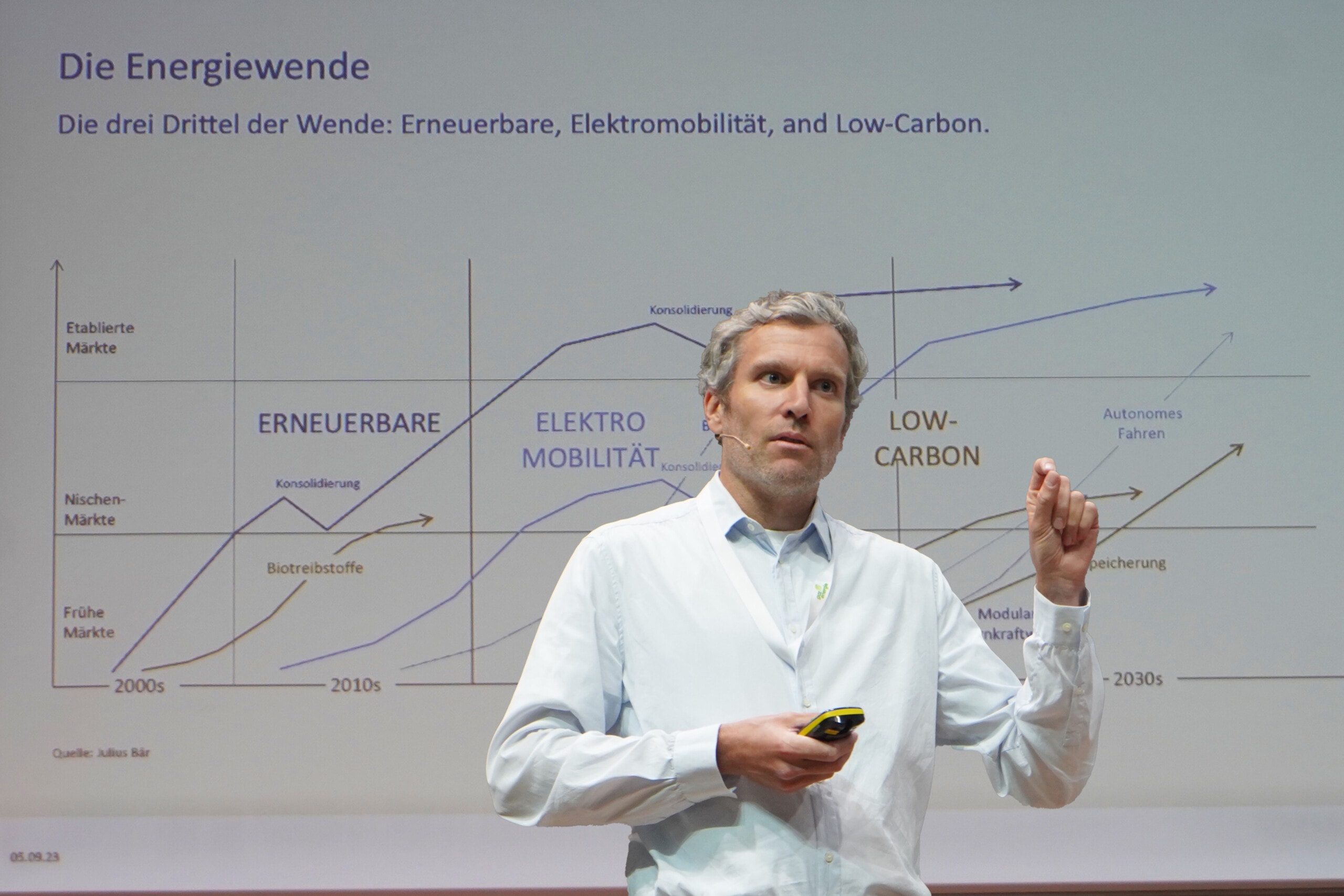 Norbert Rücker, Head of Economics & Next Generation Research at Bank Julius Bär, explained the energy transition from an investor’s perspective. Source: CNG-Mobility.ch
Norbert Rücker, Head of Economics & Next Generation Research at Bank Julius Bär, explained the energy transition from an investor’s perspective. Source: CNG-Mobility.ch
Norbert Rücker, Head of Economics & Next Generation Research at Bank Julius Baer, then approached the topic from a rather sober perspective: “My focus is on the movements on the markets. Structural change means: some companies lose, some gain. There is money behind it, and that is what we are interested in.” It is enormously difficult to speculate about costs on hydrogen and hydrogen pipelines, he says, as it will always be cheaper to bring electricity to Europe. However, Rücker sees ammonia as an option, as it can be transported in a similar way to LNG, which is cheaper and safer than H2 transport. Rücker added: “Thanks to the gas power plants and gas pipelines, we also have great resilience in the energy system. But a more pragmatic net-zero view is needed: a complete net-zero energy system will be far too expensive.”
 Ennio Sinigaglia (Director Transitgas AG), Norbert Rücker (Head of Economics & Next Generation Research at Bank Julius Baer), Daniela Decurtins (Director at the Swiss Gas Industry Association), Jürg Herzog (Country Head Smart Infrastructure Switzerland at Siemens Schweiz AG), Markus Bareit (SFOE technical specialist) and Thomas Peyer (Managing Director Swisspower Green Gas AG) at the third Power-to-Gas Congress in the Umwelt Arena Spreitenbach AG (from left to right). Source: CNG-Mobility.ch
Ennio Sinigaglia (Director Transitgas AG), Norbert Rücker (Head of Economics & Next Generation Research at Bank Julius Baer), Daniela Decurtins (Director at the Swiss Gas Industry Association), Jürg Herzog (Country Head Smart Infrastructure Switzerland at Siemens Schweiz AG), Markus Bareit (SFOE technical specialist) and Thomas Peyer (Managing Director Swisspower Green Gas AG) at the third Power-to-Gas Congress in the Umwelt Arena Spreitenbach AG (from left to right). Source: CNG-Mobility.ch
Daniela Decurtins, Director at the Swiss Gas Industry Association, then demonstrated the importance of a national hydrogen strategy in a discussion with Philipp Steinberg, Head of Department for Economic Stabilisation and Energy Security at the German Federal Ministry of Economics and Climate Protection. “Germany needs 90 to 130 terrawatts of hydrogen in 2030, and we are in the process of creating the core network based on geographical and industrial demand criteria,” Steinberg said. “The goal has to be green hydrogen, but in the transition phase other colours of H2 should also be pushed.” In this way, he said, the aim is to lay the foundation for the future viability of German industry and to produce more hydrogen to make H2 affordable. The hydrogen expert added: “The regulatory framework has to be right, both on the demand and production side, to ensure investment security and energy transformation.” Steinberg explained, however, that not only renewable gases were needed, but also energy efficiency had to be increased.
When Daniela Decurtins asked him about the current H2 import corridors that go around Switzerland, he explained that in the European Hydrogen Backbone, Switzerland’s connection is not scheduled until 2040, “that’s later, but the train hasn’t left yet.” Asked about tips for Switzerland’s own H2 strategy, Steinberg explained: “The regulatory framework is important, but so is promotion and input from industry. From this, it is important to create a focused, action-oriented strategy.” Decurtins added: “The complexity of the energy sector is increasing. When we build scenarios, we have to think about H2, but also CH4 and CO2 grids when planning the grid.”
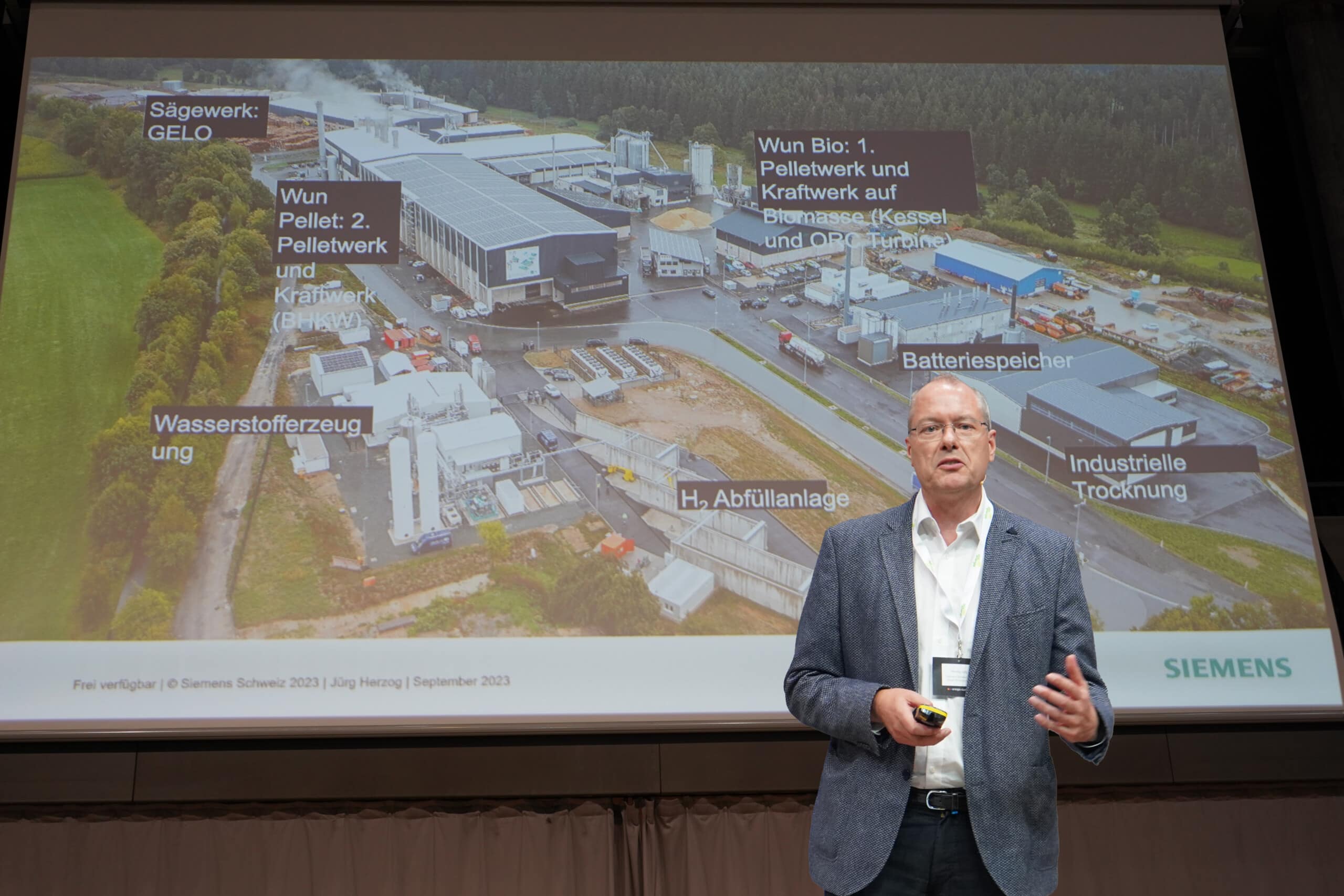 Jürg Herzog, Country Head Smart Infrastructure Switzerland at Siemens Schweiz AG, explains the project in Wunsiedel, Bavaria. Source: CNG-Mobility.ch
Jürg Herzog, Country Head Smart Infrastructure Switzerland at Siemens Schweiz AG, explains the project in Wunsiedel, Bavaria. Source: CNG-Mobility.ch
Jürg Herzog, Country Head Smart Infrastructure Switzerland at Siemens Schweiz AG, presented an interesting implemented project: A modular power-to-gas plant in Wunsiedel, Bavaria, which can be scaled up in stages. “We can produce 165 kilos of green hydrogen per hour.” In addition, sector coupling has been considered, including the use of biomass, wind and solar energy. “Basically, the plant runs very reliably. However, due to the new framework conditions and changes in the law as a result of the Ukraine war, hydrogen production became loss-making, so we were forced to suspend it from January to June.”
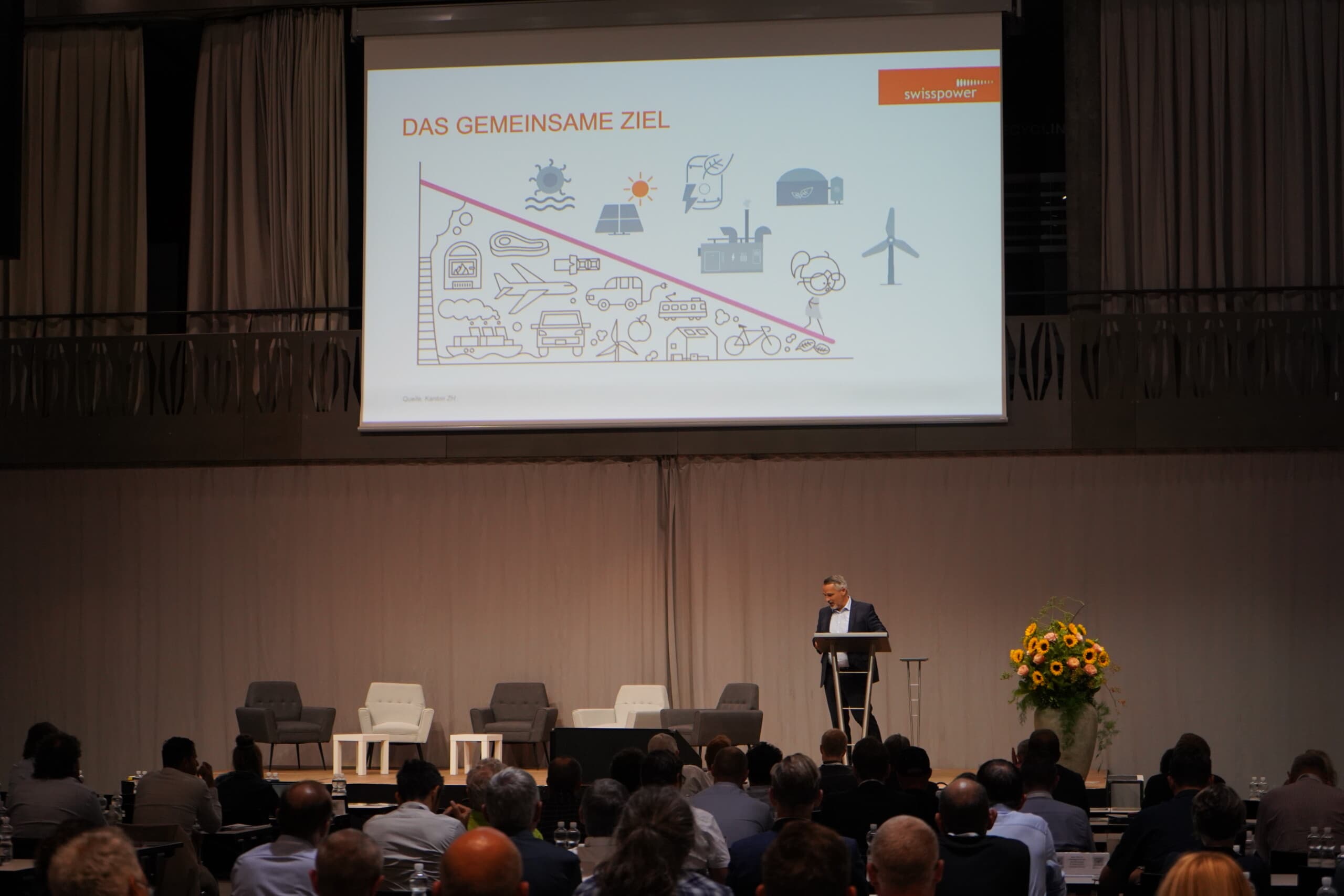 Thomas Peyer, Managing Director of Swisspower Green Gas AG, encouraged action: “Doing is like wanting, only a bit more blatant!” Source: CNG-Mobility.ch
Thomas Peyer, Managing Director of Swisspower Green Gas AG, encouraged action: “Doing is like wanting, only a bit more blatant!” Source: CNG-Mobility.ch
Thomas Peyer, Managing Director of Swisspower Green Gas AG, also addressed the economics of green H2 production, saying, “Nothing happens with power-to-gas plants without a business case!” Start-up financing is needed, he said, and the provision of electricity must be regulated nationally. “We also have to adapt the grid and add some copper if energy has to be fed in decentrally rather than at one location,” Peyer explained. Sector coupling therefore belongs imperatively in the political debate, he said. “We have to use all gases, biogas as well as derivatives of it and should not only think of hydrogen. I liked the implemented example of Siemens in Germany very much, because they are doing something. Doing is like wanting, only a bit more blatant!” Whether you end up using ammonia or methanol is secondary. The important thing is that they are renewable gases. “Renewable gases from home and abroad are not only part of the solution, but one of the key factors in the energy transition and in achieving the climate goal,” Peyer is certain. “The liquefaction of biogas is also increasingly becoming an issue in this context, so that we can bring biogas to regions where there is no grid today.”
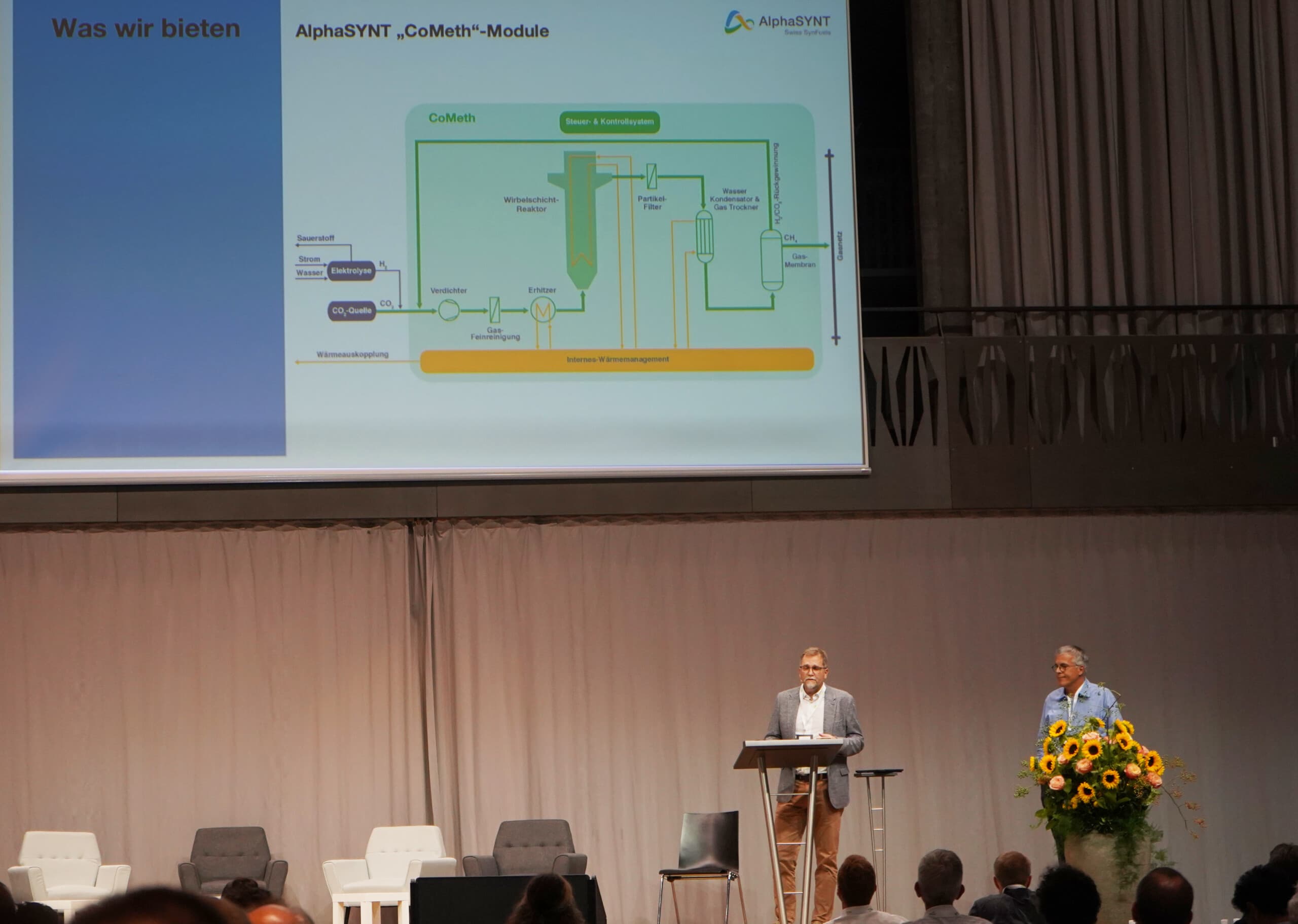 Together with PSI, the company Alphasynt has developed and now commercialised a process for CO2 upcycling. Source: CNG-Mobility.ch
Together with PSI, the company Alphasynt has developed and now commercialised a process for CO2 upcycling. Source: CNG-Mobility.ch
Andreas Aeschimann and Tilman Schildhauer, who presented “GanyMeth“, showed that promising projects in the field of renewable gases do not necessarily have to go abroad. This uses a direct methanation process developed at the Paul Scherrer Institute, in which the CO2 no longer has to be separated during biomethane production, but is mixed with hydrogen together with the biogas in a fluidised bed reactor. “We have now scaled up and can give industrial partners the confidence that it is possible to implement this technology,” says Aeschimann. “One of our plants can cover the gas needs of 40 to 80 trucks. The goal is large-scale biomethane production. And with surplus electricity, of course, further H2 can be produced via electrolysis,” he elaborated. And Gauthier Corbat, managing director of H2Bois, then showed how waste wood and other by-products of pellet production can be used in the Jura to produce green hydrogen by means of a thermolysis/pyrolysis process. “In contrast to burning the wood, H2 production does not release the CO2 stored in the wood back into the atmosphere,” the Jura native calculates “That means: the production of one kilo of H2 provides a CO2 reduction of twelve kilos.”
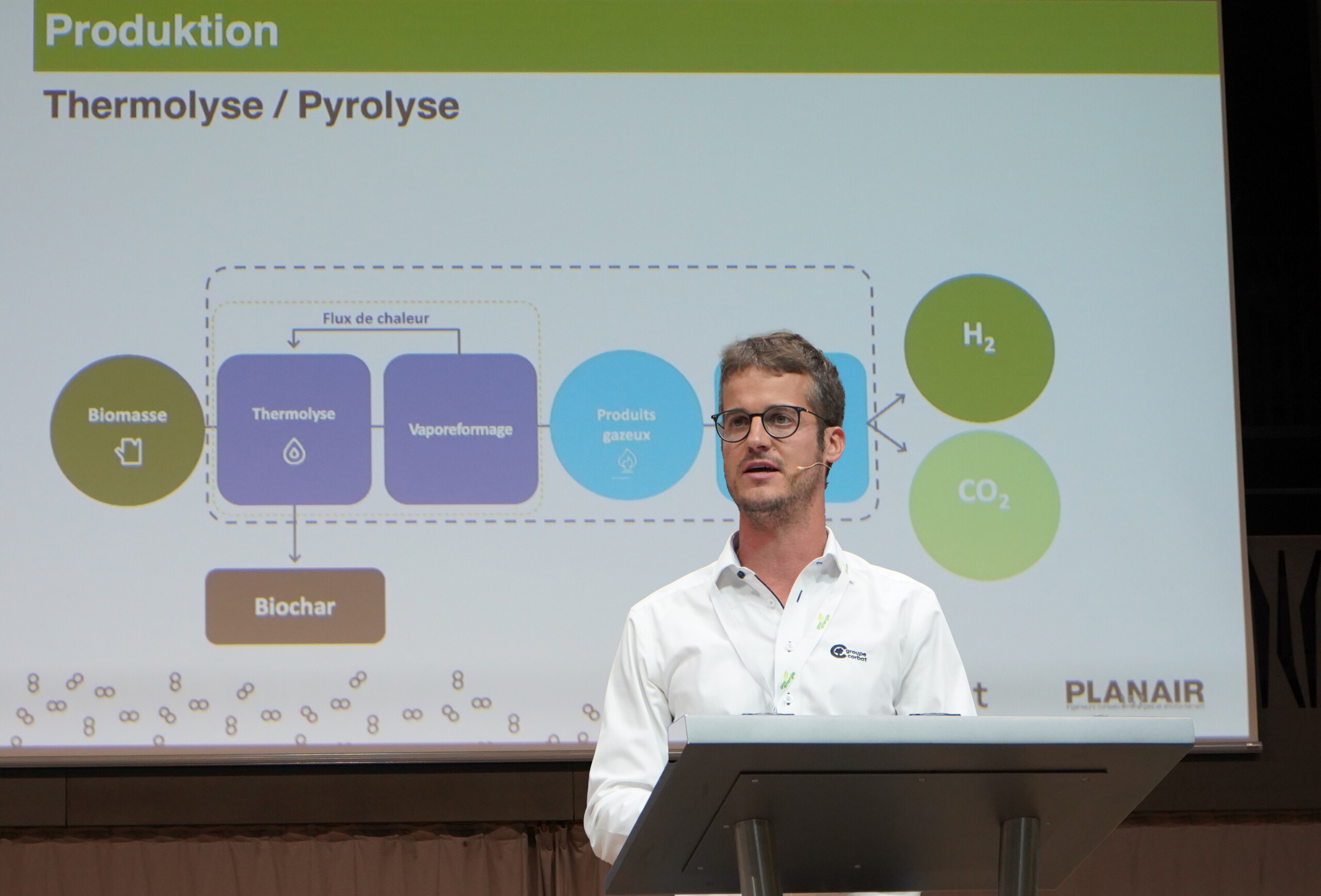 Gauthier Corbat, managing director of H2Bois, explains how he plans to produce green hydrogen from wood in the Valais. Source: CNG-Mobility.ch
Gauthier Corbat, managing director of H2Bois, explains how he plans to produce green hydrogen from wood in the Valais. Source: CNG-Mobility.ch
In the panel discussion that followed, Andreas Kunz then explained: “Hydrogen will not be able to replace natural gas one-to-one, and biomass for biogas is a rare commodity. If H2 is to play an important role, then it needs a clearly regulated pipeline transport system.” For the head of energy plants at Energie 360° AG, it is clear that international biogas trading and a creditability must come. “We have to be open to technology, because we simply don’t know yet which solution will be the right one. And we have to be quick to go for H2, biomethane or synthetic gases when there is clarity.” GLP National Councillor Martin Bäumle replied: “We have to push power-to-X technology, but leave open what the end product is.” Bern is not asleep in this regard. However, he said, one is still with H2 and biogas, but not with all renewable energies. “We are now well on track with the new coat decree, but with energy efficiency – which is talked about far too little – we are not yet where we should be.” Without international cooperation, however, not only for energy security but also for economic reasons, the future outlook is bleak, he said.
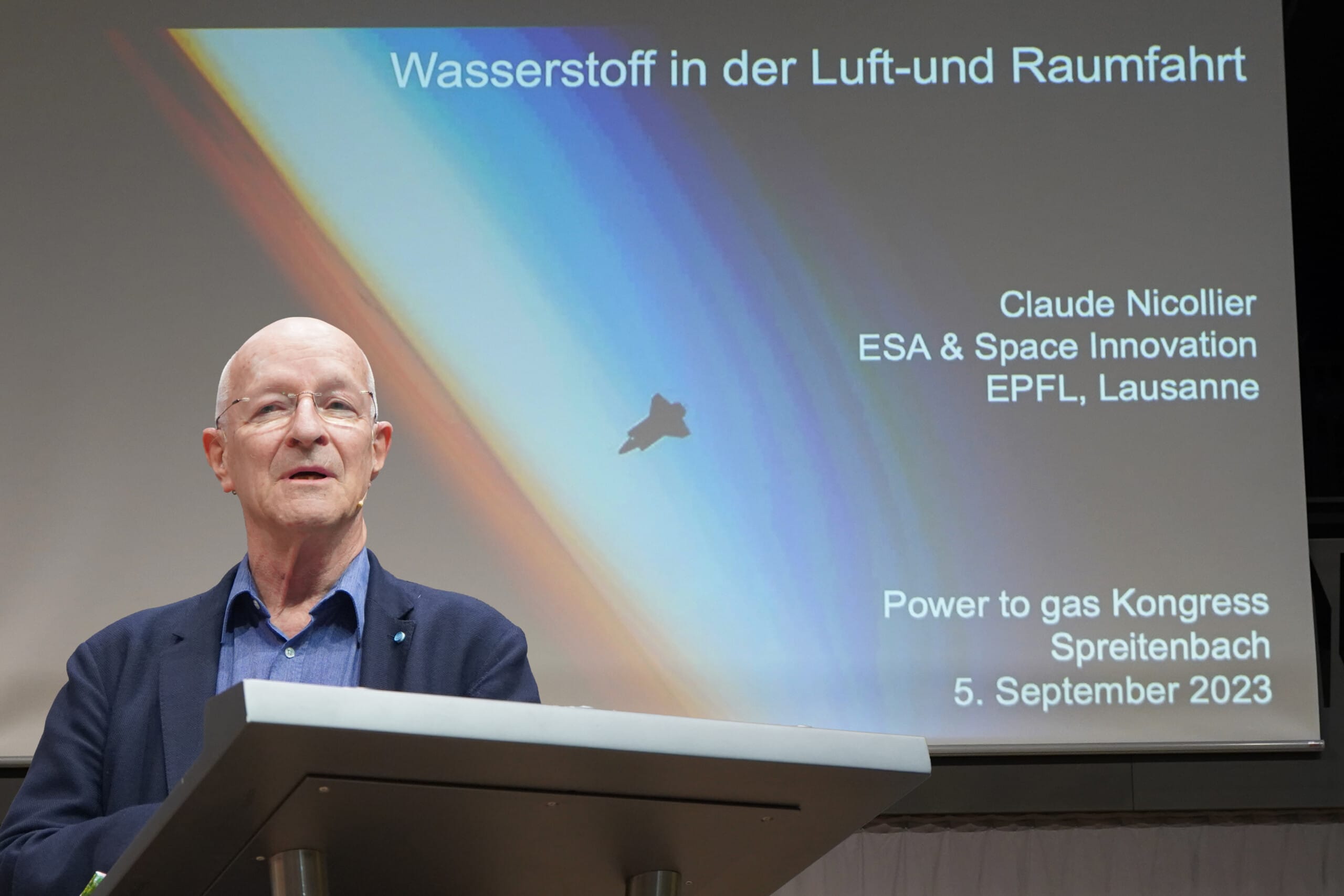 Swiss astronaut Claude Nicollier explained the path of space and aviation to net zero. Source: CNG-Mobility.ch
Swiss astronaut Claude Nicollier explained the path of space and aviation to net zero. Source: CNG-Mobility.ch
At the end of the Power-to-Gas Congress Switzerland, Claude Nicollier, the first and so far only Swiss astronaut in space, looked a little further into the future. The man from French-speaking Switzerland, who flew on four space shuttle missions, explained how aviation is approaching the goal of net zero by 2050. “So-called SAF – short for Sustainable Aviation Fuel – is already being used today, but only in small quantities. And there are already many small aircraft with electric propulsion. The range is quite small, but for flight training it is definitely an option,” says the 79-year-old. “But for combustion in a jet engine, green hydrogen instead of paraffin is definitely an exciting option.” Since the H2 tanks in aircraft would have to be enormous in size, a new type of wing-fuselage architecture for jets could help.
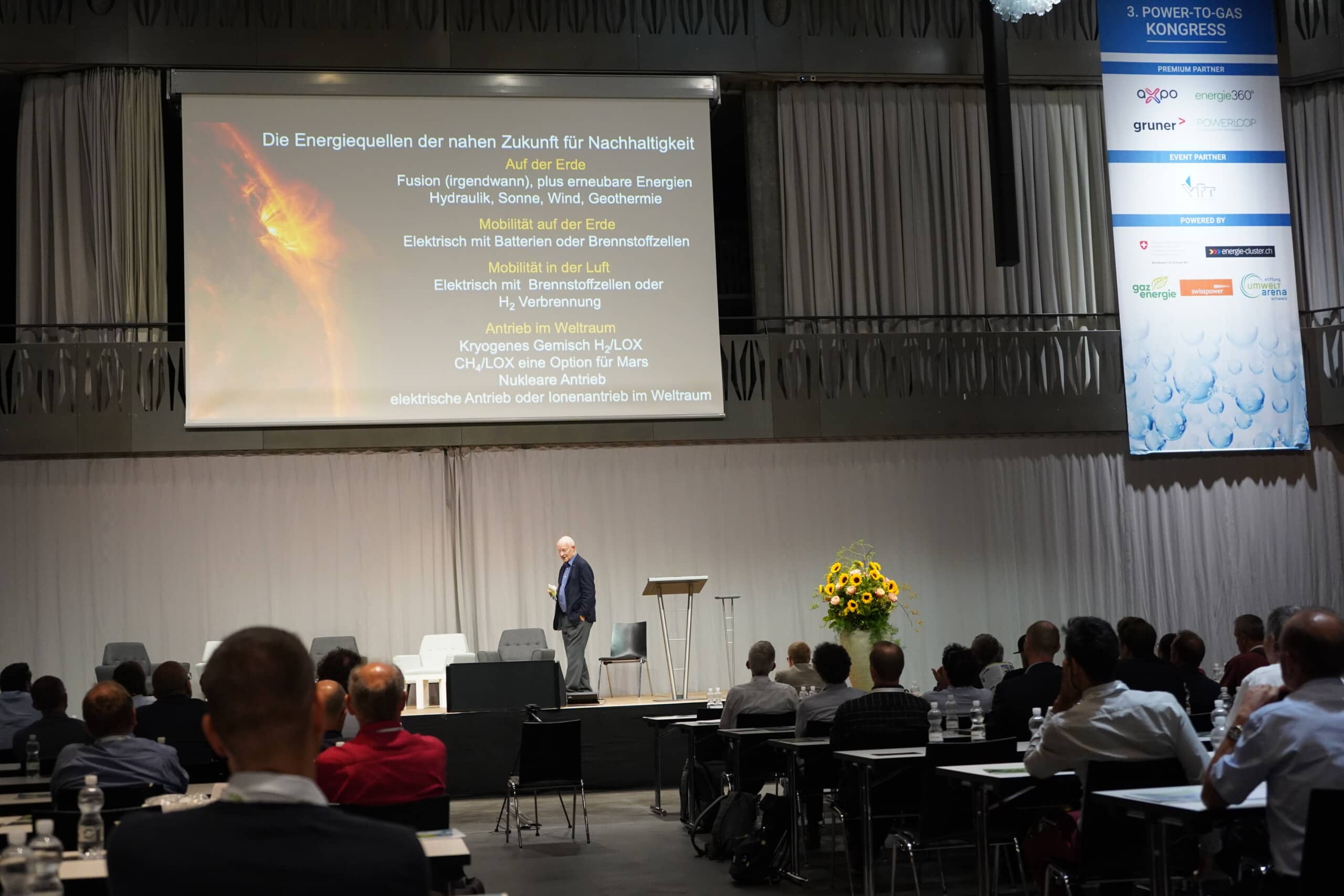 Claude Nicollier spoke about the energy sources of the near future and their sustainability aspect. Source: CNG-Mobility.ch
Claude Nicollier spoke about the energy sources of the near future and their sustainability aspect. Source: CNG-Mobility.ch
“I think in the 2030s we will then get into that range,” Nicollier said. However, he says he is not sure about the future of hydrogen in aerospace, revealing, “Tesla founder Elon Musk, for one, had the idea of reusing the individual stages of the rockets. Space X already does that regularly now. For another, he uses CH4 and liquid oxygen for propulsion – also an exciting thing.” For in this way Musk will perhaps one day make it to Mars and there immediately obtain the fuel for the return or onward flight from the methane-rich Martian atmosphere. And so even the electric car pioneer seems to be relying for once on green methane instead of electricity in order to have enough thrust… (pd/jas, 12 September 2023)
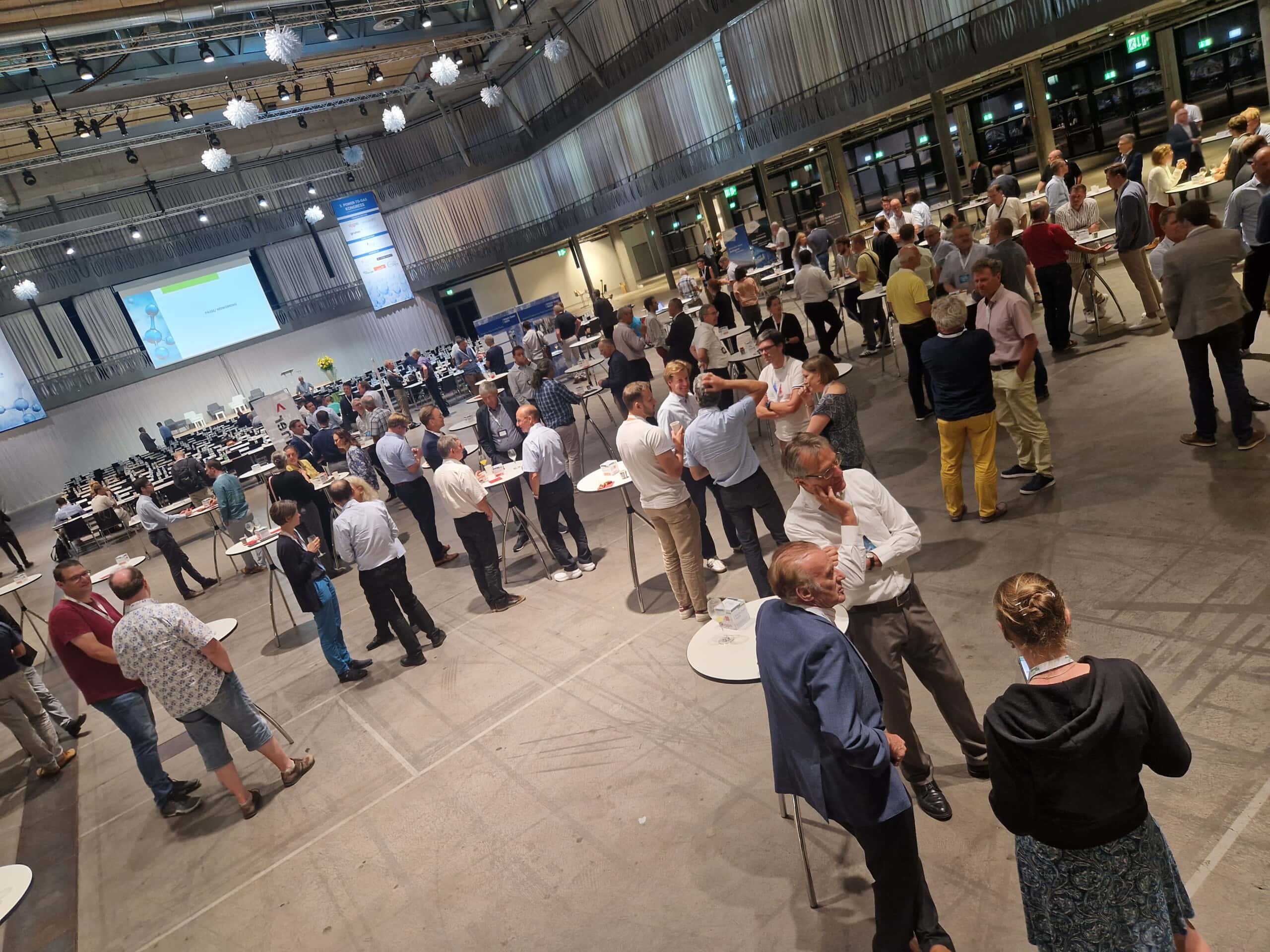 The Power-to-Gas Congress Switzerland is also a good opportunity for networking. Incidentally, it is scheduled to take place again on 3 September 2024. Source: CNG-Mobility.ch
The Power-to-Gas Congress Switzerland is also a good opportunity for networking. Incidentally, it is scheduled to take place again on 3 September 2024. Source: CNG-Mobility.ch
You might also be interested in
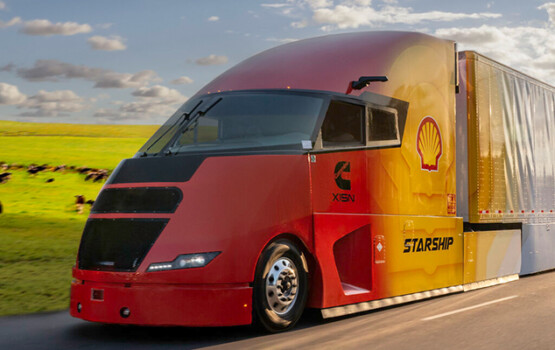
Shell Starship on record hunt

